Elevator Material Overview
| Material | Characteristics | Applications | Benefits |
| Stainless Steel | Durable, corrosion-resistant, modern appearance | Elevator cab walls, handrails, door frames, ceiling, cop, and lop | Easy maintenance, long-lasting, sleek look |
| Glass | Sleek, modern, shiny, transparent views | Walls, doors, ceiling, and floors in scenic or panoramic elevators | Open feel, gives stunning views of the building’s exterior part |
| Wood | Warm, elegant, requires maintenance | Walls, handrails, floor, and ceiling | Luxurious atmosphere, aesthetic appeal |
| Marble | Luxurious, durable, requires regular care | Floors and walls | Sophisticated look, combines beauty and durability |
| Aluminum Alloy | Lightweight, corrosion-resistant, cost-effective | Frames, door panels, handrails, and decorative strips | Strong, modern, budget-friendly |
| Plastic And Acrylic Panels | Lightweight, budget-friendly, customizable | Control panel, guardrails, handrails, and floor corners | Affordable, easy to clean |
| Laminates | Lightweight, Cost-effective, available in various patterns and colors | Walls, ceiling, and soundproof board | Versatile, durable, and reasonable cost |
Stainless Steel
Stainless steel has the characteristics of high strength, corrosion resistance, beauty and environmental protection. Its shiny look gives it a lot of superiority, making it an excellent option for the modern and high-traffic environment. It is not expensive and practical. Therefore, it is one of the most commonly used materials for elevators.
Where Do We Use It?
We utilize this material in elevator cab walls, handrails, doors, ceilings, cop, and lop. It is appropriate for all types of elevators.
Why Choose Stainless Steel?
With improved living standards, people now seek more stylish elevator designs. Stainless steel, with its varied finishes like colored electroplating, etched patterns, and mirror or hairline finishes, meets these demands. It enhances the elevator’s look, improves the passenger experience, and reduces material costs. This is why most of the materials used in elevators are stainless.
Tips: High-quality elevator materials can keep your elevator from deformation and rust for 20 years!
For commercial and home elevators, 304 stainless steel is recommended. For coastal or high-corrosion areas, use 316 stainless steel. Dazen offers 1.2mm and 1.5mm 304 stainless steel elevators as standards. Be cautious of low-quality alternatives like 201 or 430.

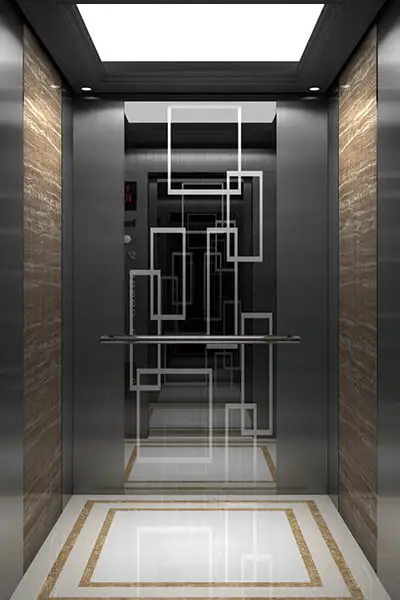
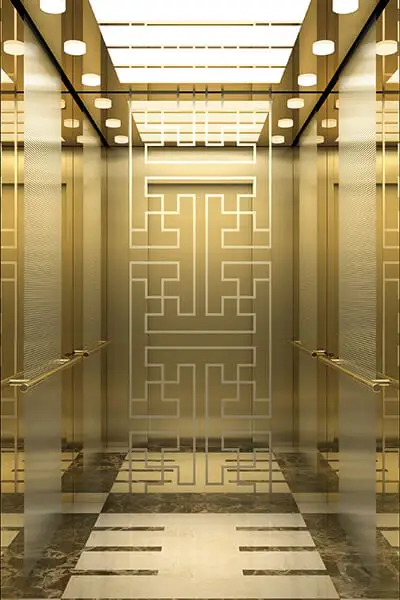
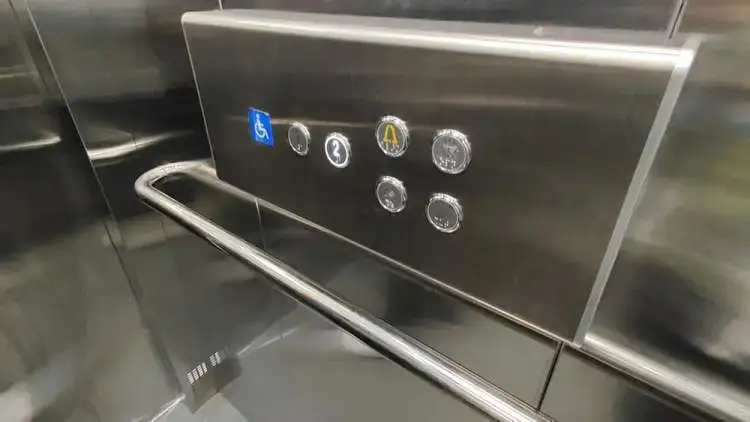
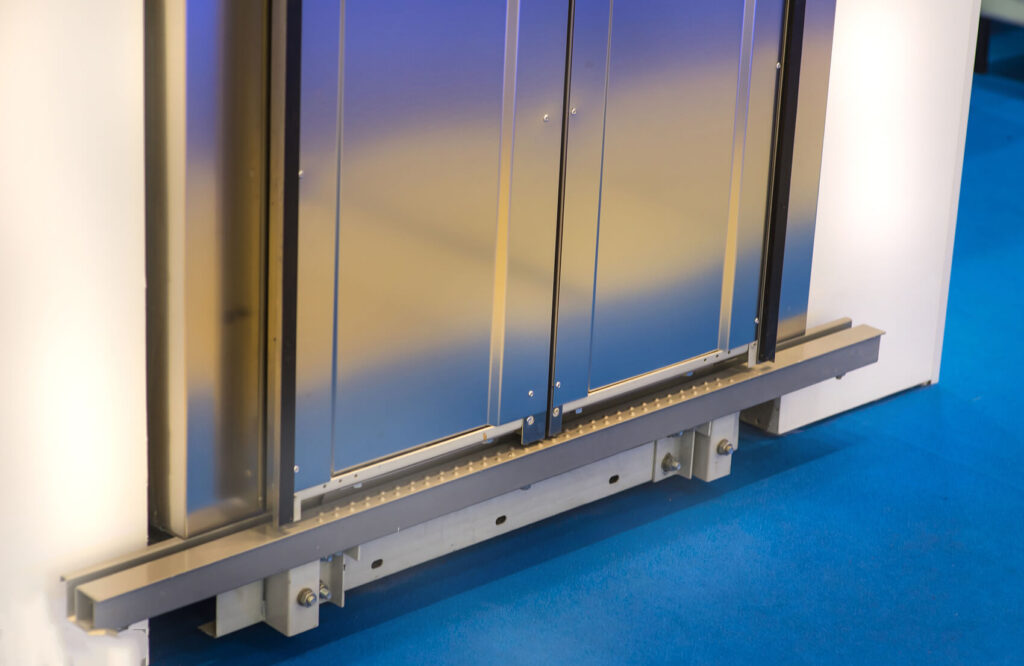
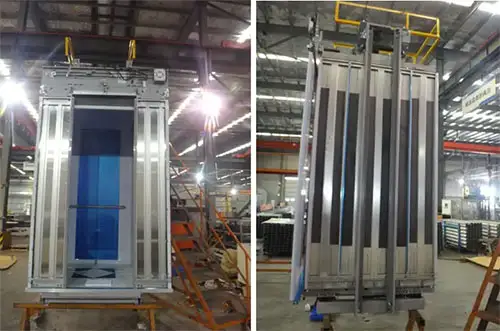
Glass
Glass is sleek and modern with good visual appeal. The glass is most typically hardened or laminated for safety reasons. The use of glass for construction is best suited for providing passengers with panoramic views by opening vistas in both vertical and horizontal directions.
Where Do We Use It?
Glass is used in scenic or panoramic elevators in shopping malls, offices, and tourist attractions. It is used in the elevator cab walls, door, ceiling, and floor areas.
Why Choose Glass?
Glass not only shows the overall beauty of the building, but also can be adjusted to different shapes according to different civil engineering designs, including round, semi-circular, and square. The outdoor landscape from various angles brings passengers enjoyment and novel experience.
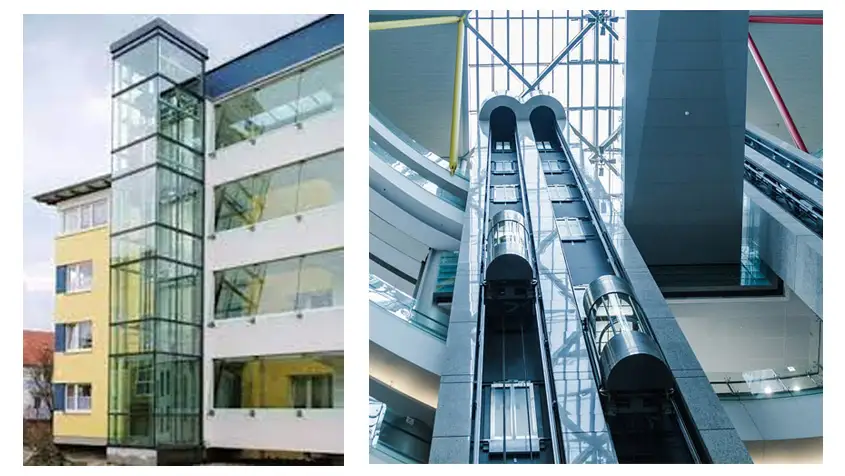
Wood
Wood is warm and classy. The use of wood veneer, mostly in elevators, adds a very natural and classy look to the overall design of the elevator. However, at the same time, it would be much more prone to scratches and moisture damage as opposed to metals, hence requiring more care and maintenance.
Where Do We Use It?
It is used more aesthetically rather than functionally. That is why it is often chosen for use in high-end hotel elevators and executive offices, as well as some luxury residential buildings. It’s often used for walls, ceiling, handrail and floors to provide an atmosphere that is rich and inviting.
Why Choose Wood?
Wooden finish cab selections are good for those people looking to have an elevator cab aesthetically appealing or refined in its comfort. It can be used for traditional or luxurious appearances.
Note: When selecting wood, the elevator takes into account its durability and fire resistance to ensure a balance between beauty and safety.
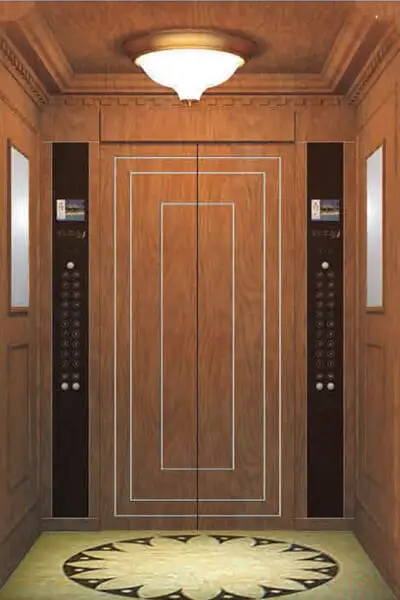
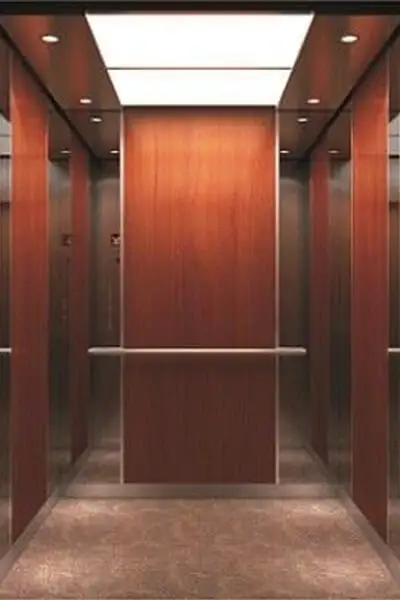
Marble
Marble has luxurious and elegant appearance. It brings a sense of sophistication and grandeur to elevator interiors. They are highly resistant to scratches and wear and tear.
Where Do We Use It?
It is typically applied on the floor and lower wall panels of the cab.
Why Choose Marble?
If you want to provide an elegant and sophisticated ambiance in the elevator, marble is your best bet. Due to its natural beauty and durability, it has become a common choice in floor and high-end elevator decoration.
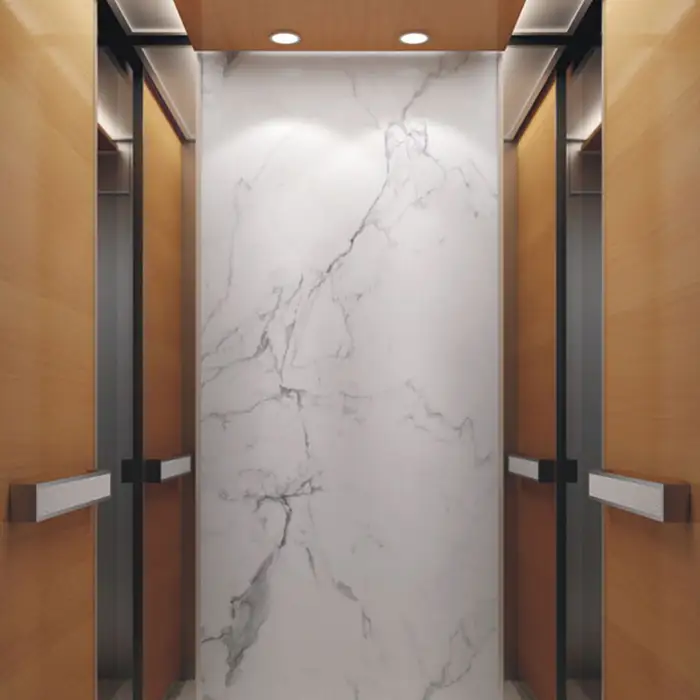
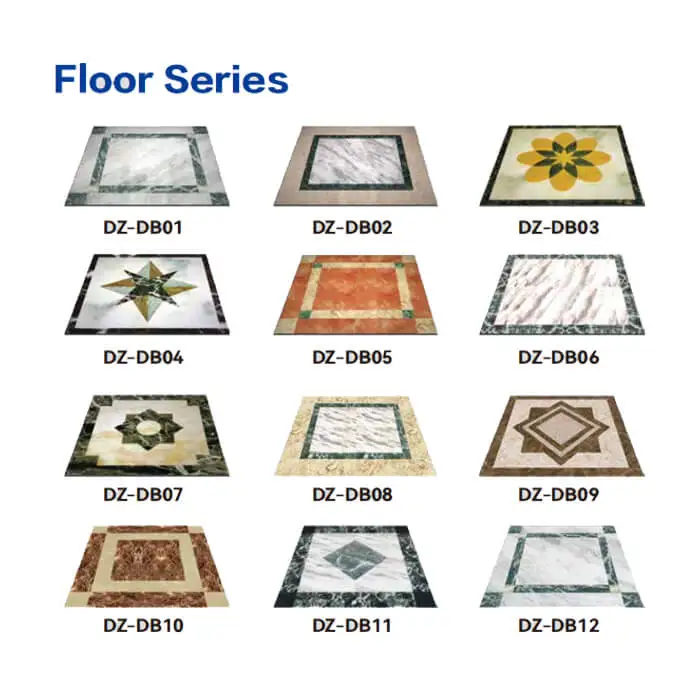
Aluminum Alloy
Aluminum alloy is light weight material. The advantages of aluminum alloy are light weight, corrosion resistance, smooth surface and easy cleaning. The disadvantages are that it is lower in strength than steel and relatively expensive, so it is usually used for some parts of elevators
Where Do We Use It?
The frame and handrails of sightseeing elevators, handrails, decorative strips and door panels of home elevators.
Why Choose Aluminum Alloy?
Aluminium alloy is best and wise choice for building owners and interior designers who are looking for a lightweight material. It is very suitable for projects where weight reduction of the elevator is needed without compromising durability.
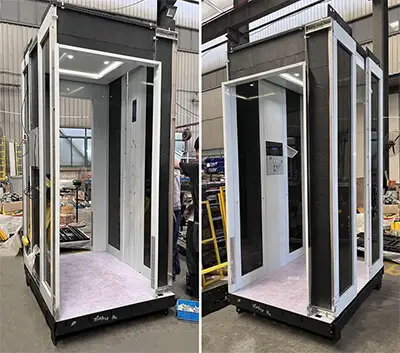
Laminates
Laminates are much cheaper compared to wood, stone, or metal finishing alternatives. Laminates come in various patterns, textures, and colors, are very easy to take care of, and would only require a short cleaning time. They also resist stains and marks.
Where Do We Use It?
They are used in elevator cab walls, ceilings, and soundproof boards. You can use it in elevators of commercial apartment, shopping malls, and even in residential buildings. This product comes with a shiny appearance at an economical price without using expensive natural materials.
Why Choose Laminates?
They are one of the good options if you look for a versatile, durable, and budget-friendly material. The wide variety of finishes allows for simulating expensive materials but will provide design flexibility at lower prices.

Frequently Asked Questions
1. What materials were originally used to make the elevator?
The early elevators were made of wood and iron, which provided the most optimal balance between strength and aesthetics. With the advancement of technology, such stronger, fire-resistant, as well as economical materials such as steel and aluminum replaced these older materials gradually.
2. Can the interior of the elevator be designed according to architectural aesthetics?
Yes, of course! The interior of an elevator cab can be adjusted to meet the architectural typology of a building. If you want to be something sleek and modern, such as a skyscraper or traditional luxury hotel, wood, stainless steel, glass, or marble are the better materials to suit your desires. A well-designed elevator enhances the architectural value and gives it that seamless feel throughout the building.
3. What material of elevator is the most cost-effective?
Stainless steel is the most affordable material for elevators. The cost-effectiveness of elevator materials should be considered from the perspective of the original price, service life, maintenance cost, safety performance, etc. Stainless steel has become the undisputed first-choice material in the elevator engineering field due to its excellent environmental adaptability, structural strength, safety performance, low maintenance cost, and aesthetic value. For the quality stainless steel, you can contact Dazen.
4. Are there any safety regulations for elevator car materials?
Yes. Materials used for elevator cabs have safety requirements. The materials used have to be up to the mark of fire safety, prevent wear and tear, and provide adequate safety for passengers. For example, glass in elevators needs to be either tempered or laminated so that there are no breakage-related injuries, and specific materials have to be able to withstand specified ratings for fire resistance.
5. How do you maintain the materials used in an elevator cab?
Material types differ in their maintenance needs. Stainless steel-type materials have to be cleaned frequently, removing fingerprints or smudges. Wood and marble require special care for scratches and staining. Carpet needs vacuuming frequently and cleaning so it may appear nice and clear. Laminates and plastic panels require less maintenance since even mild detergent is already enough to clean them.
Contact Dazen for Professional Material Guidance: Let Dazen help you choose the right materials for your elevator. We specialize in creating stylish, durable elevators tailored to your needs. Contact Us Now!
